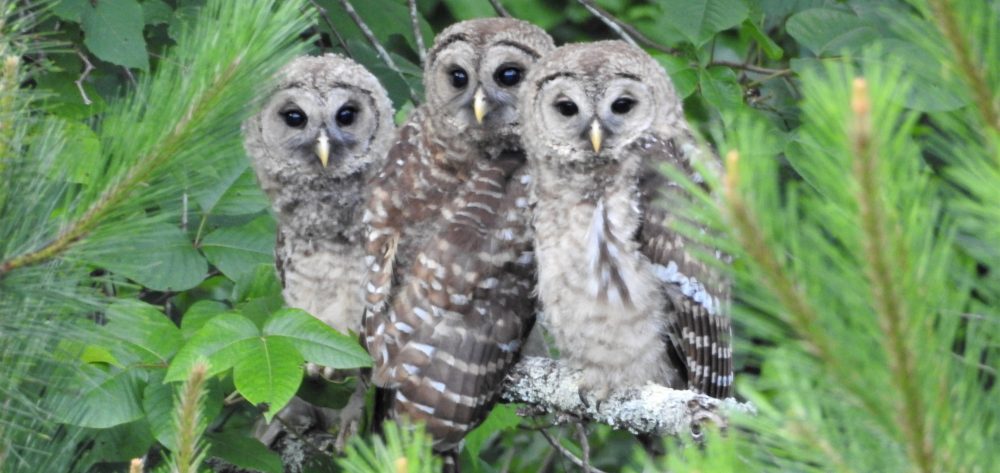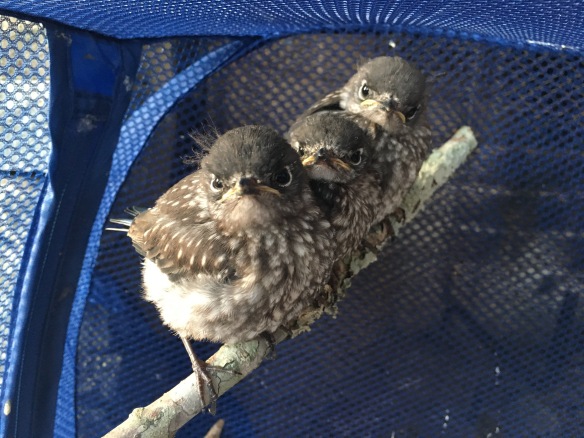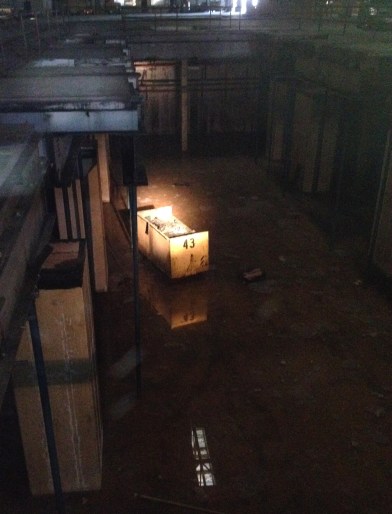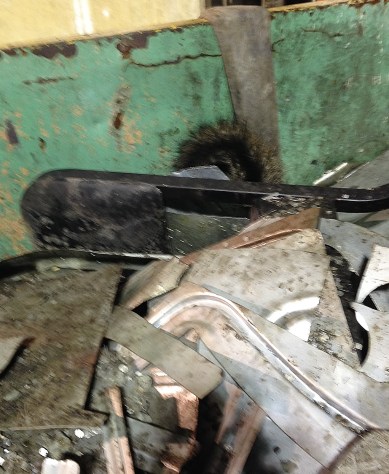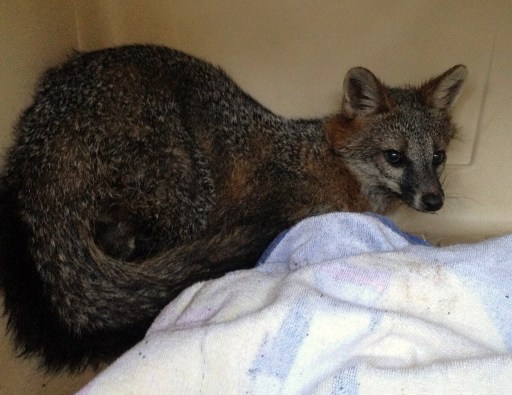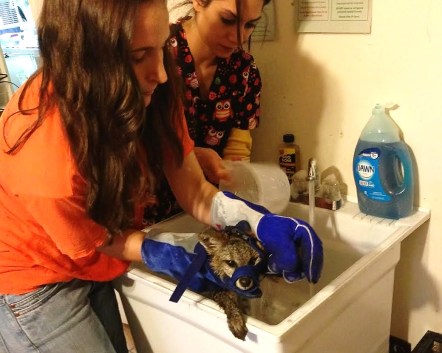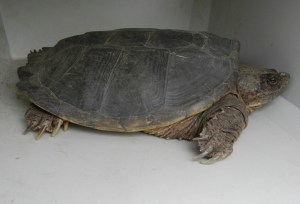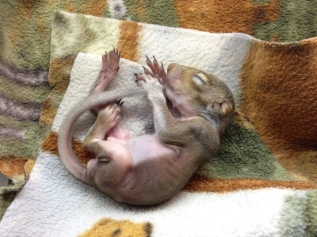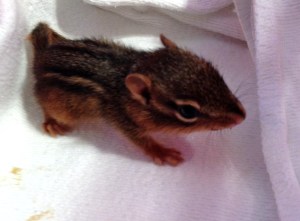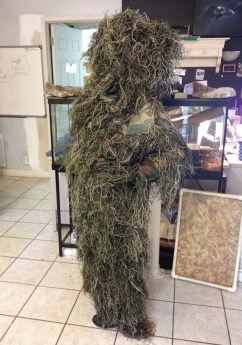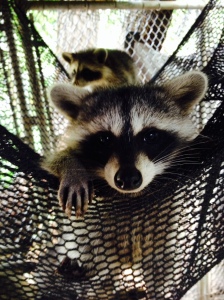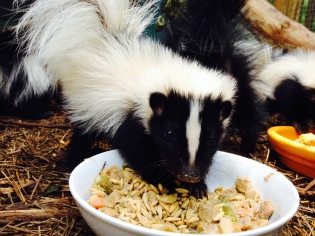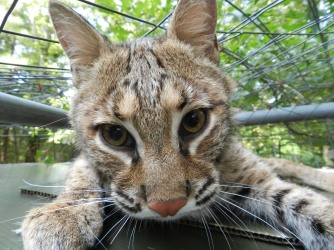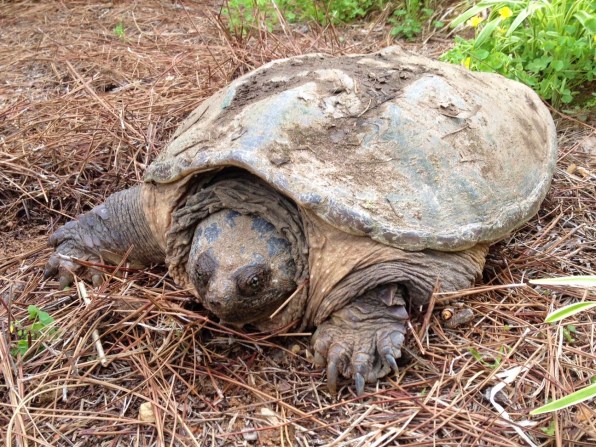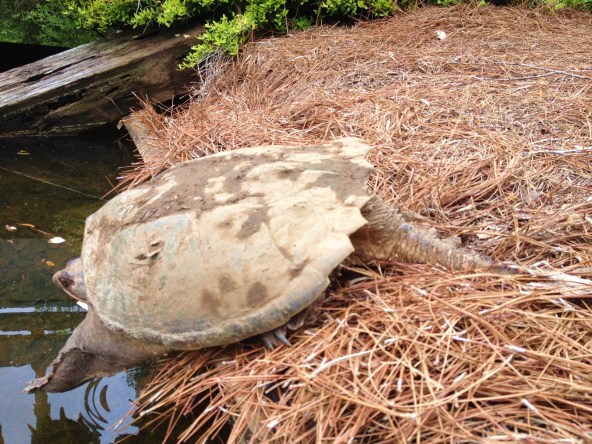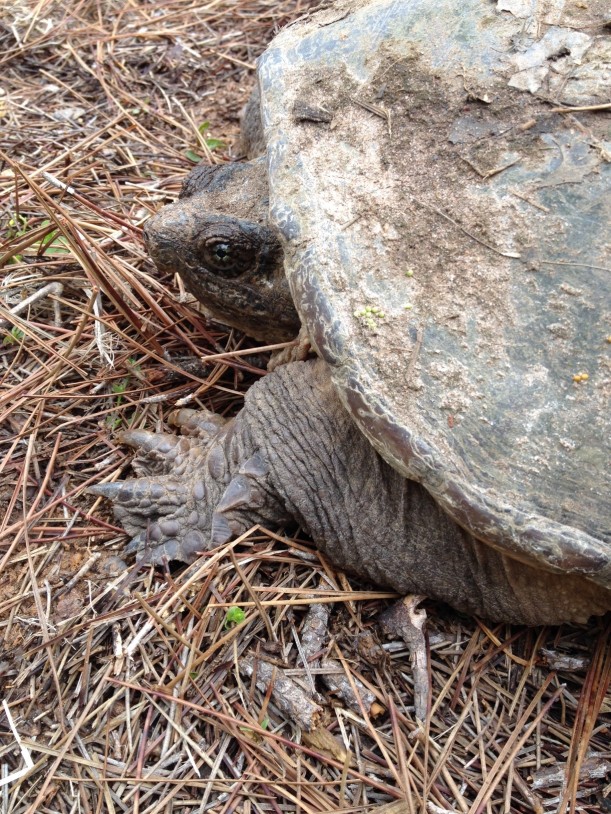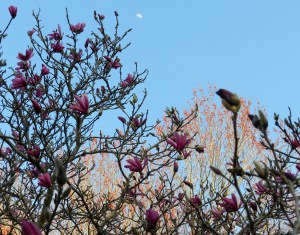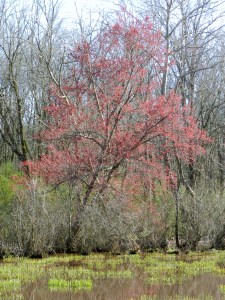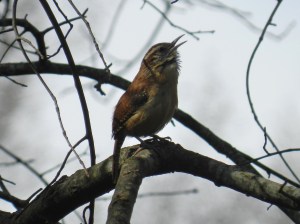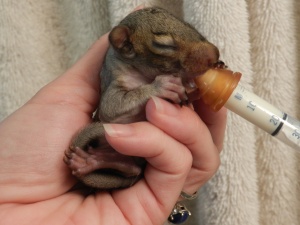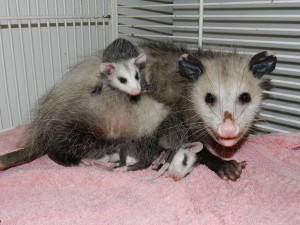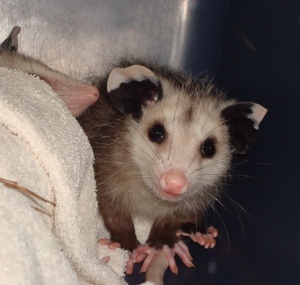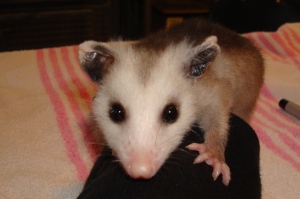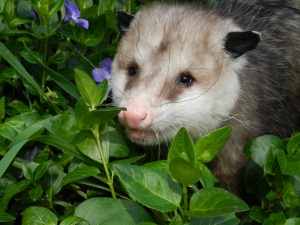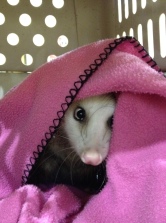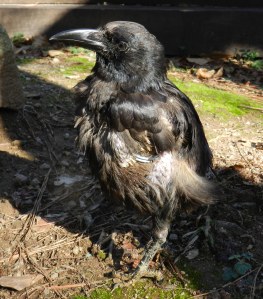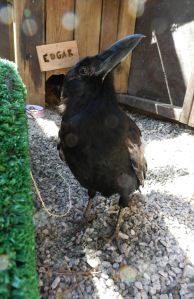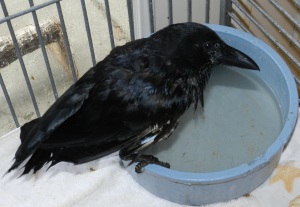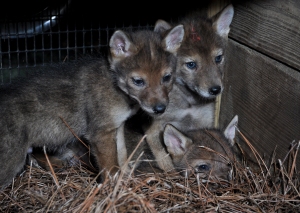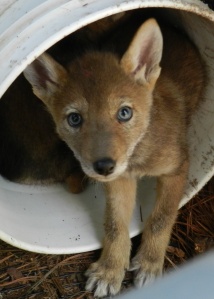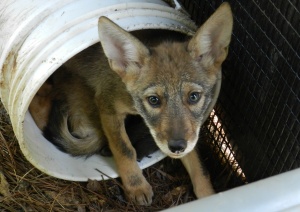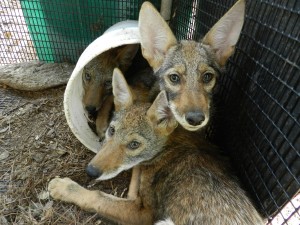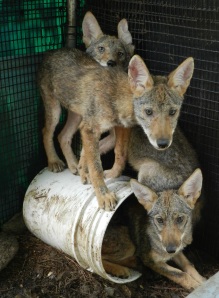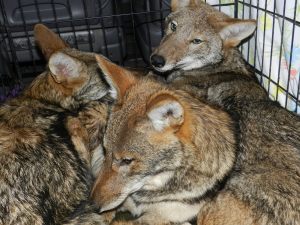This past May, I took in a tiny nestling woodpecker that fell from his nest at the top of a dead tree at the nature preserve where my office is located.
I tried several tree services to see if they could renest the baby. One sympathetic, brave tree climber even tried to help, but the snag was too unstable for him to safely reach the nest cavity.

While I’ve assisted with the care of hundreds of baby birds during my years volunteering at a wildlife rehabilitation center (AWARE), and have raised numerous baby squirrels from infancy to release, this was my first time raising a baby bird on my own.
For exactly six weeks, I had the privilege to care for this tiny miracle, witnessing his transformation from a helpless, constantly-chirping clump of pin-feathers to a fully-feathered, fast-flying wild bird. Being a bird-mom wasn’t so different from mothering my own infants. The baby needed to be kept warm, fed, clean, and dry. In this case, nighttime feedings weren’t required, but for the first few weeks, I offered a specially prepared formula, warmed, by syringe every 15-30 minutes for 14 hours a day. And, of course, what goes in…
Needless to say, juggling full-time work and a baby woodpecker didn’t leave me with spare time for writing (I regret neglecting my blog and you faithful friends who read it), but I did post regular updates on Facebook and Instagram. What follows is a photo and video essay, comprised of my social media posts during this amazing journey.
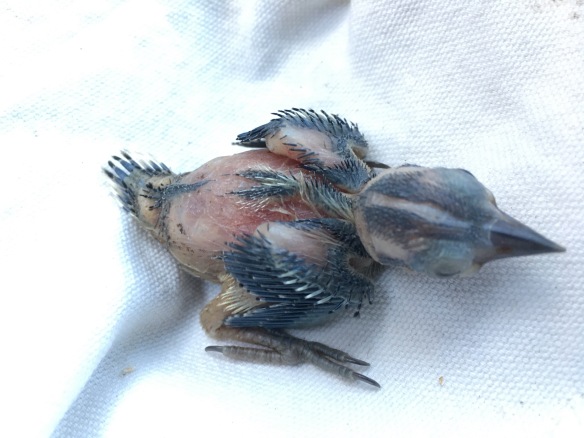
May 17 — This little nestling fell from a tree cavity and was found on the ground this afternoon by @adambetuel at the nature preserve where we work. We weren’t able to get her back in the nest, so I’m doing my best as foster mom for now. Hoping a tree service will help me get her back in the nest since the parents are still tending other babies. Can you guess what species it is? Lots of good clues… #wildliferehab #babybird #justanotherdayattheoffice #feedme #crazyanimallady
All day long this one chitters! Looks like she’ll be staying with me a bit longer. A tree climber attempted to renest today, but the snag was just too unstable for him to get as high as he needed to be. We’ve made it 48 hours! She’s working hard growing, and I’m working hard keeping her fed! #feedingtimeagain #babyseason #nestling
Here is something pretty cool to see! (Yes, the baby is quiet which is remarkable in itself.) Woodpeckers have long tongues used for spearing and raking insects from crevices. Their tongues are so long that they they wrap around the skull. If you watch closely when the baby flicks her tongue, you can see it moving over the top of her head. Another day of feeding every 30 minutes begins! #babybird #wildliferehab
Learning how to be a woodpecker…pecking and probing. So many new feathers, and this afternoon I heard my first “peek!” #proudmamamoment #wildliferehab #birdspam #sorrycanthelpit
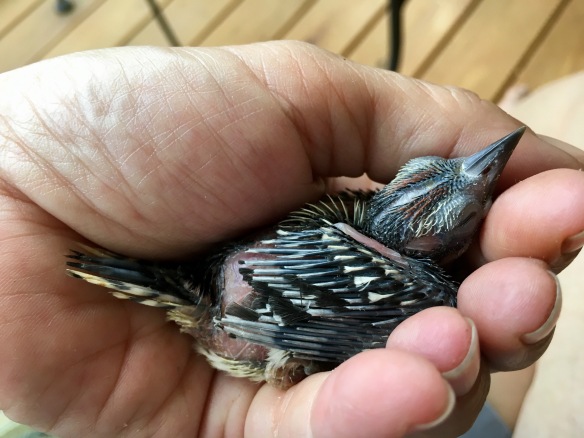
He sleeps… #heartmelts #abirdinthehand

Growing feathers… #littlemiracles #artinnature
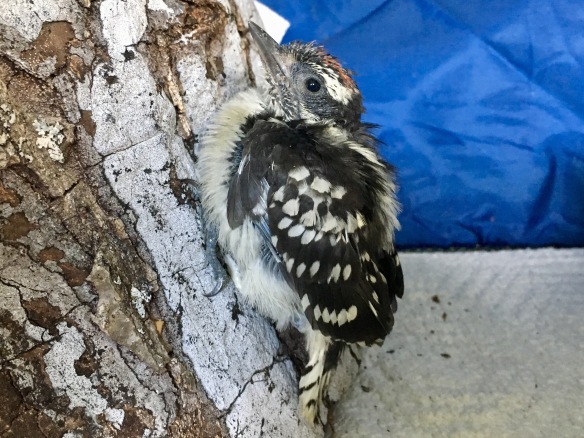
When the baby comes back after being with a friend for a few days and isn’t a baby anymore…! We’re calling him Sal. #imabigkidnow
Nest? Who needs a nest?! #proudmomma

Spending time on the porch to get used to the sounds and sensations. I wish he had a sibling to bond with, but for now, I’m all he’s got. #snowwhitesgotnothingonme
When you’ve been playing hard and can’t keep your eyes open anymore… #tuckeredout #sosleepy #isnthethecutest

Lots of exploring and new experiences today. This guy’s been ready to leave the nest from the start, apparently. I think those black bars on his tail feathers mean he’s actually a Downy Woodpecker, though I would’ve sworn he came from a Hairy’s nest. (Both are nesting in the area where he was found). Whatever this little bird is, he’s sure got a lot of spunk! #whatsthisbird #ohthecuteness
And just like that…solid food! #imabigkidnow #birdwatching #fledgling
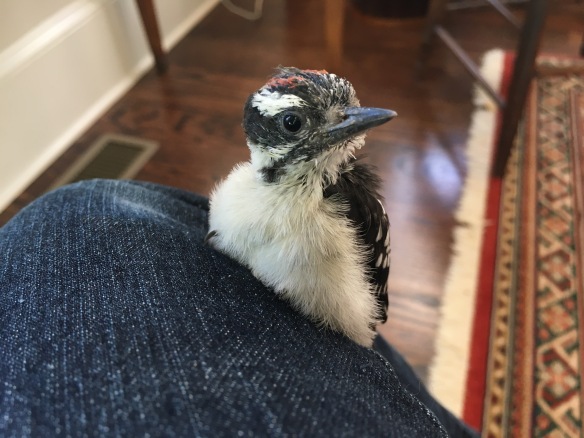
He knows his mama! Just flew right to me from the top of his cage! #lapbird #theskysthelimit
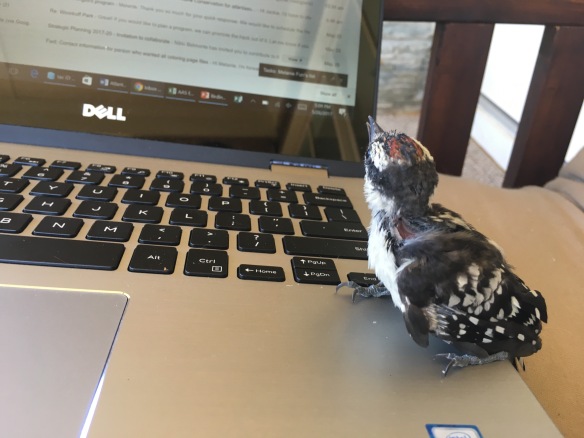
Working for the birds… #birdsmatter
This guy is fully flighted now! He thinks he’s quite done with his mesh cage (and people!), but he’s stuck with me a bit longer while we work on self-feeding. Made progress today! #theygrowupsofast

Twelve days… #theygrowupsofast
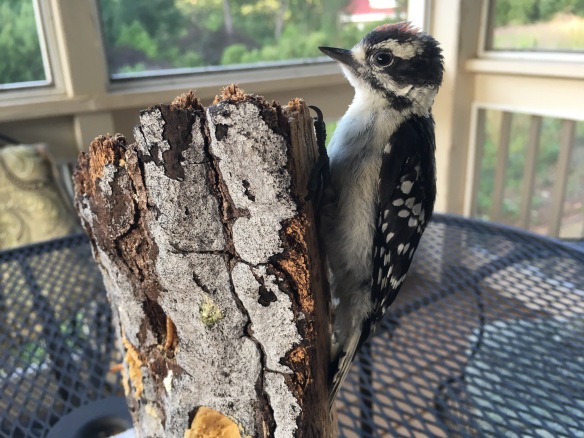

Two weeks ago this little miracle fell into my life (and hijacked my FB and Instagram). He’s weaning now (as you can see in these pics and the video I just posted), so our days together are numbered. He’s given me a such a precious gift. #gonnamissthatkid
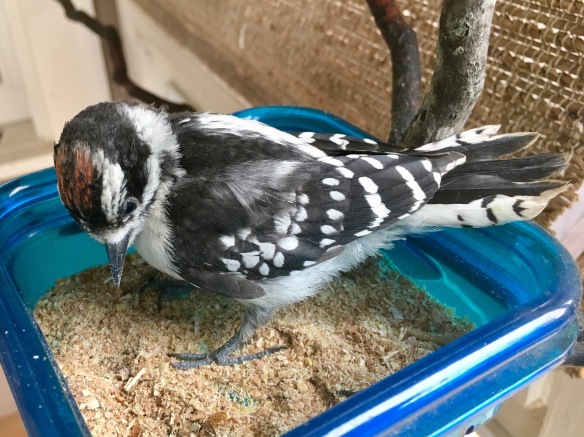
Learning to eat from a mealworm feeder… ’cause you know, someone might put one out for him when he’s released. #woodpeckerlife

This little troublemaker is gaining independence and knows good and well where to find his grub, but mom’s shoulder is a sure bet, too. Gonna miss him this week while traveling for work, but he’s with a great bird-sitter who has promised to send updates. #gotmealworms #birdmom
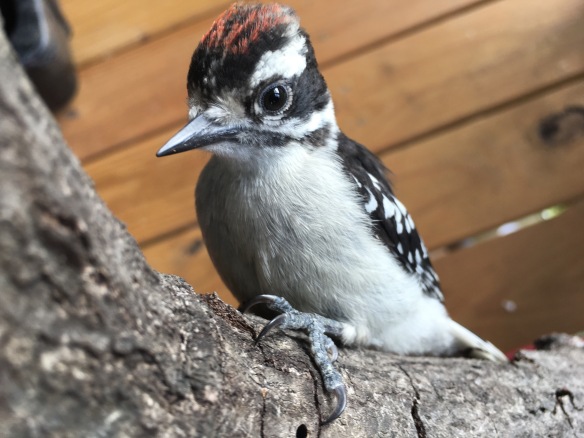
I saw lots of gorgeous birds in the mountains this week, but this is the one that has my heart. Thanks to my friends Joy and Ken for taking such good care of Sal while I was traveling. #littlesal #theygrowupsofast #birdwatching
Today we tried blueberries! #ithinkhelikesit
Bath time!! #rubadubdub #birdwatching #littlesal #wildliferehab #woodpecker
What’s that thing you’re always holding up in my face, mom? #woodpeckerselfies #trouble #curiousbird
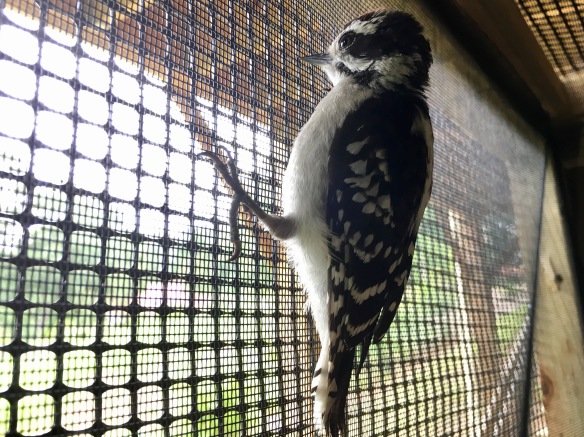

I have an aviary, at least a temporary one! A fellow rehabber donated it to me, my amazing husband drove 50 miles with me to pick it up and promptly put it together on our lower deck, and I installed the screen. Sal moved in two days ago and is happy being outside and unconfined all the time. When he’s ready (not flying at me for food when I visit), i’ll open the door for him to explore the big wide world. He can return to his safe retreat until he’s ready to be on his own. I decided that even if I could find a release cage for him with another rehabber, Sal and I are in this together till the end. #wildliferehab #gamechanger
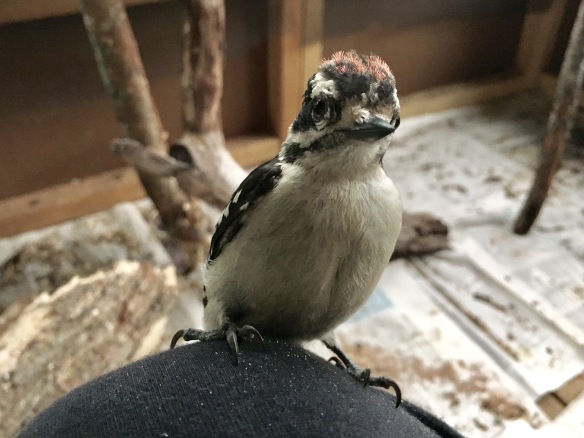
Someone missed me while I was out of town for my teacher workshop this week. (Or is it the other way around?) #birdmom
Learning to eat peanuts and showing off his neat trick of holding his food on his belly while he pecks at it. Thanks, @juliezickefoose, for the suggestion! #wildliferehab #goodeats
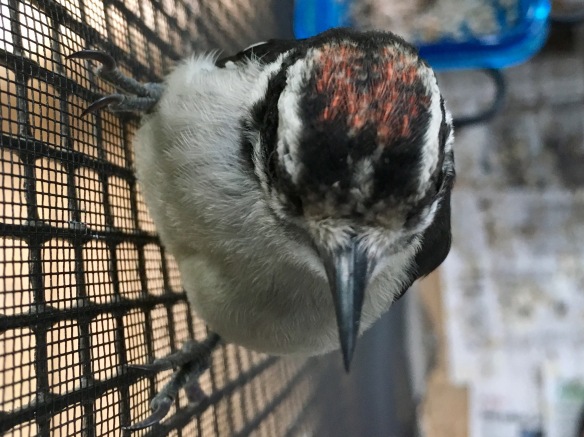
A little piece of my heart right here… Friends ask about Sal’s name. When he was found, near a Hairy Woodpecker nest, I mistook him for a Hairy nestling, and not yet knowing his gender, embraced the suggestion by @katy_manley to name him (when “Hairy” met) “Sally.” Later, discovering “she” was a “he”–and a Downy Woodpecker–I changed his name to Salvador, meaning “savior”–“Sal” for short. So, may I present Salvador Downy! #littlesal #whatsinaname
Soaking it all in… Little Sal’s release day is impending! #birdmom #bathtime #woodpeckerlife

Sal is pretty charming after his bath as well, even if he looks rather silly. Feather care is important! #washandgo
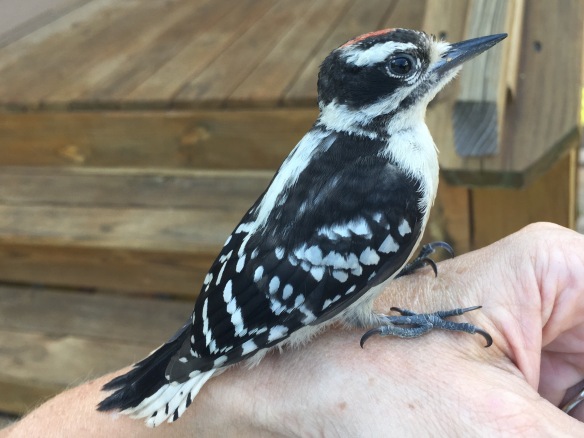
Little Sal is free! I released him this morning with a small group of friends. After he left the cage, he checked around the outside of it for 2 minutes, made several jubilant flights around the yard, then disappeared for two hours until returning for a mealworm snack. He has explored all corners of the yard, and we’ve been calling to each other throughout the afternoon. Friends ask if I’m sad, but I couldn’t be more excited to see him enjoying his freedom. #freeatlast #salvadordowny #thisaintmyfirstrodeo
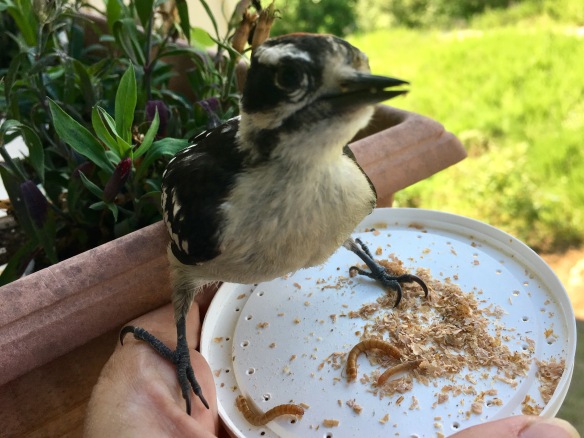
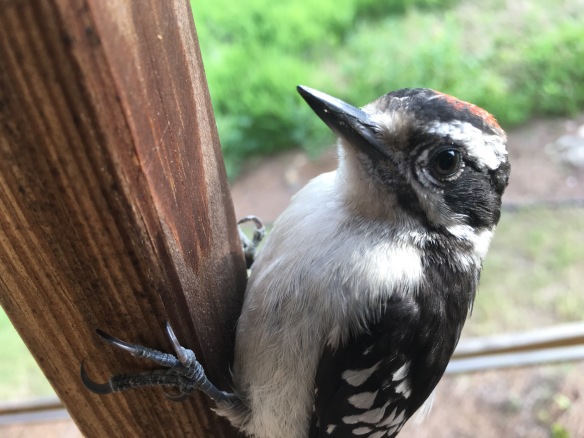
June 29 — First night in the books! Sal flew off to sleep among some pines last night after I topped him off with some mealworms. I was glad he stopped by again for breakfast! #thefreelife #birdwatching
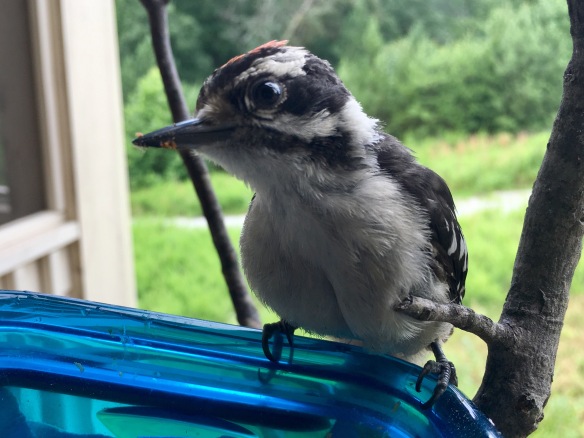
Sal continues to grace our lives with his presence. If you’re curious, you can see more of his adventures on my Facebook and Instagram feeds.
Oh, and then there were these bluebirds…
